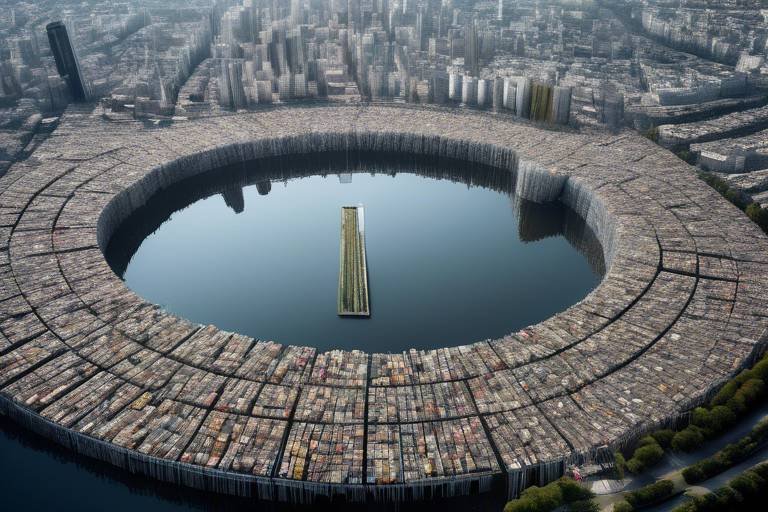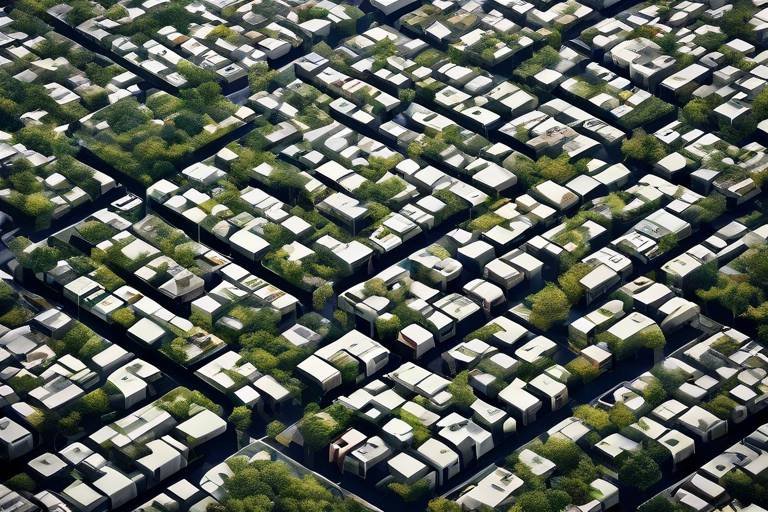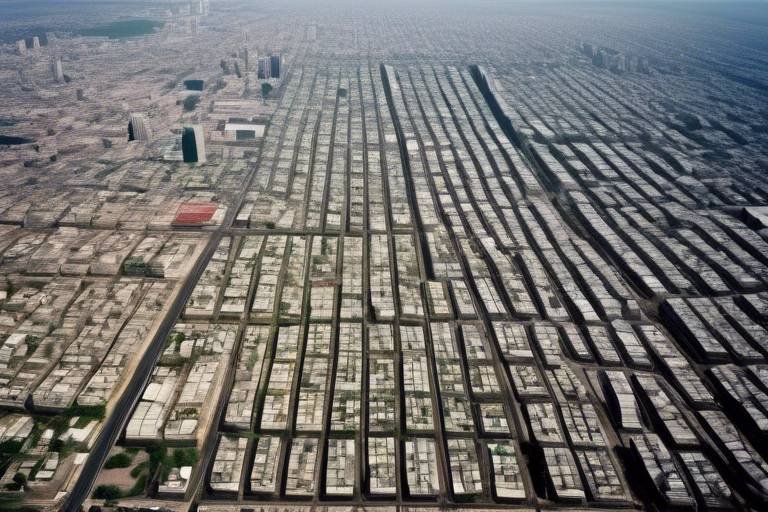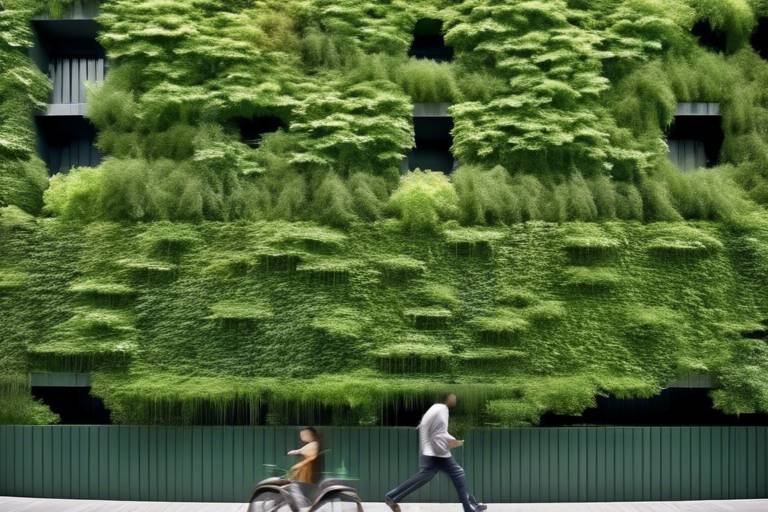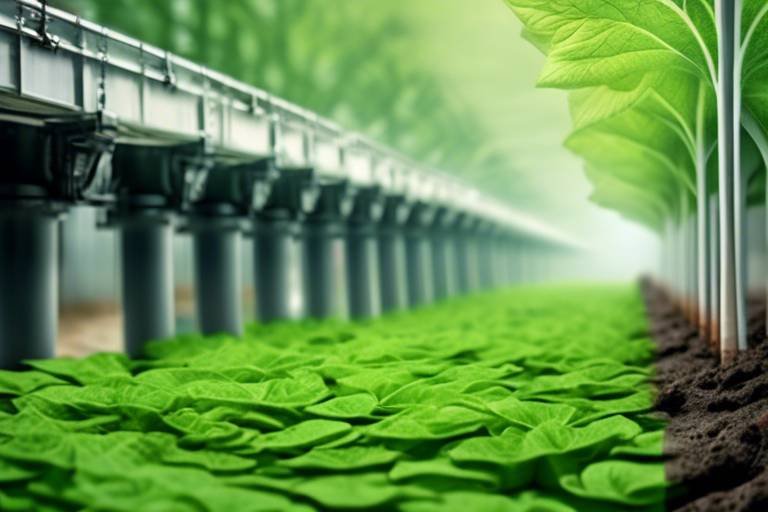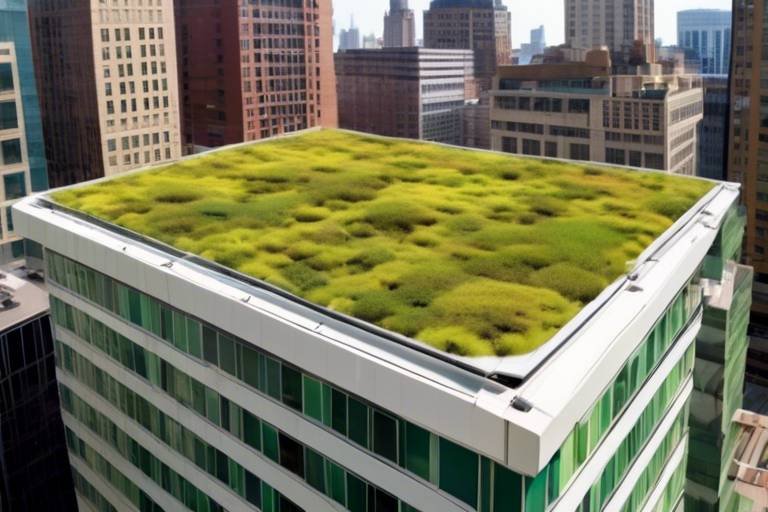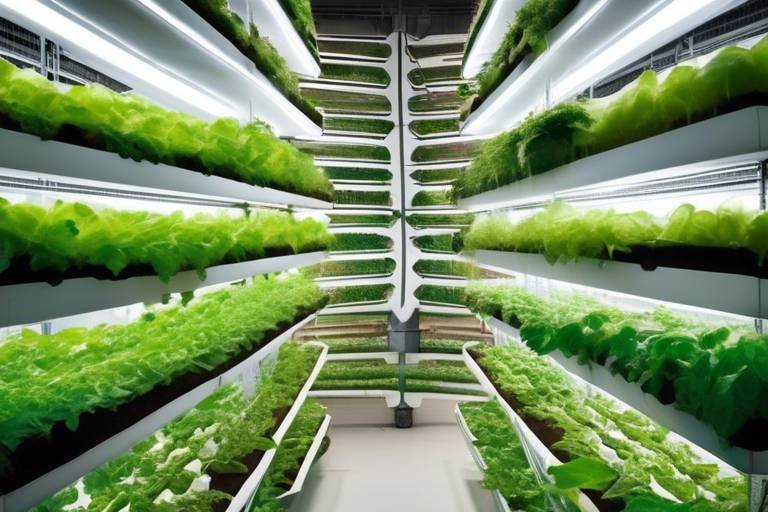How Can Urban Green Spaces Combat Pollution?
Urban green spaces are not just patches of grass or a few trees scattered throughout a city; they are vital lifelines that can significantly combat pollution and enhance the quality of life for urban residents. In a world where cities are expanding rapidly, the importance of these green areas cannot be overstated. They act as natural air filters, absorbing harmful pollutants and releasing oxygen, which is essential for our survival. Imagine walking through a park, the fresh air filling your lungs, as the sound of chirping birds and rustling leaves surrounds you. This is not just a pleasant experience; it’s a crucial aspect of urban living that contributes to our health and well-being.
Moreover, urban green spaces are essential for fostering biodiversity. They provide habitats for various species, from birds and insects to small mammals, creating a balance that is often disrupted in urban settings. This biodiversity is not just beneficial for the animals; it plays a significant role in maintaining ecological balance, which is vital for our environment. Just like a well-tuned orchestra, where each instrument contributes to the overall harmony, each species in a green space plays a role in the larger ecosystem.
In addition to improving air quality and supporting wildlife, urban green spaces serve as communal hubs that promote social interaction and community well-being. Parks and gardens are places where people come together to relax, exercise, and engage in recreational activities. They provide a much-needed escape from the hustle and bustle of city life, offering a serene environment that can help reduce stress and enhance mental health. Think of them as the lungs of the city, breathing life into concrete jungles and providing a sanctuary for both nature and people.
But how do we ensure that these green spaces are effectively integrated into our urban landscapes? It starts with understanding the importance of planning and policy. Cities must prioritize green infrastructure in their development strategies. This means not only creating new green spaces but also maintaining and enhancing existing ones. By doing so, we can create urban environments that are not only more sustainable but also more resilient to the challenges posed by pollution and climate change.
In summary, urban green spaces are indispensable in the fight against pollution. They enhance air quality, support biodiversity, foster community engagement, and improve overall urban living conditions. As we continue to develop our cities, it is crucial to recognize the multifaceted benefits that these green areas provide. By investing in and prioritizing urban green spaces, we are investing in a healthier, more sustainable future for ourselves and generations to come.
- What types of plants are best for urban green spaces? Native plants are often the best choice as they require less water and maintenance while supporting local wildlife.
- How do urban green spaces improve mental health? They provide a peaceful environment for relaxation and recreation, which can reduce stress and improve overall well-being.
- Can green roofs really make a difference? Yes, green roofs can reduce energy consumption, improve air quality, and manage stormwater runoff.
- What role does community engagement play in maintaining green spaces? Community involvement is crucial for the upkeep and success of urban green spaces, fostering a sense of ownership and responsibility among residents.

The Role of Trees in Air Quality Improvement
Trees are often referred to as the lungs of our cities, and for good reason! They play a critical role in improving air quality by filtering out harmful pollutants and providing us with the oxygen we breathe. Imagine walking down a bustling city street, surrounded by towering buildings and the sounds of honking cars. Now, picture those same streets lined with trees, their lush green leaves absorbing carbon dioxide and releasing oxygen. This transformation is not just a dream; it’s the reality that urban green spaces can create.
One of the most significant benefits of trees is their ability to absorb pollutants. They capture particulate matter, such as dust, smoke, and soot, on their leaves and bark. In fact, a mature tree can absorb up to 48 pounds of carbon dioxide each year! This is particularly important in urban areas where air pollution levels can be alarmingly high. Trees also release volatile organic compounds (VOCs) that can help to break down harmful pollutants in the air, further improving the quality of the air we breathe.
Moreover, the presence of trees can lead to a reduction in urban heat. Through a process called evapotranspiration, trees release moisture into the air, which cools the surrounding environment. This cooling effect can significantly lower temperatures in densely populated areas, making cities more comfortable and reducing the need for air conditioning. In fact, studies have shown that urban areas with more trees can be up to 10 degrees cooler than those without!
In addition to their cooling effects, trees also provide a natural barrier against noise pollution. Their leaves and branches can absorb sound, creating a more peaceful urban environment. This is particularly beneficial in busy city centers where noise can be overwhelming. By planting more trees, we can create quieter, more serene spaces for residents to enjoy.
Furthermore, trees contribute to the overall biodiversity of urban areas. They provide habitats for various species, including birds, insects, and small mammals. This biodiversity is essential for maintaining ecological balance and resilience against environmental changes. When we plant trees, we’re not just improving air quality; we’re also fostering a thriving ecosystem right in the heart of the city.
To illustrate the impact of trees on air quality, consider the following table:
| Tree Type | Pollutants Absorbed (lbs/year) | Oxygen Released (lbs/year) |
|---|---|---|
| Oak | 50 | 260 |
| Pine | 40 | 150 |
| Maple | 45 | 200 |
As you can see, different tree species contribute uniquely to improving air quality. By strategically planting a variety of trees in urban areas, we can maximize their benefits and create healthier living environments for everyone.
In conclusion, the role of trees in air quality improvement cannot be overstated. They are vital for filtering pollutants, providing oxygen, reducing heat, and enhancing biodiversity. As we continue to face challenges related to urbanization and pollution, it’s crucial that we prioritize the planting and preservation of trees in our cities. After all, a greener city is a healthier city!
- How do trees improve air quality? Trees absorb carbon dioxide and release oxygen, while also filtering out pollutants and particulate matter from the air.
- What is the urban heat island effect? The urban heat island effect refers to urban areas being significantly warmer than their rural surroundings due to human activities and the concentration of buildings and infrastructure.
- How can I contribute to increasing green spaces in my city? You can participate in local tree-planting events, advocate for urban greening initiatives, or even start a community garden!

Benefits of Parks and Green Areas
Parks and green areas in urban environments are not just pretty patches of grass; they are essential lifelines for city dwellers. Imagine walking through a vibrant park filled with lush trees, colorful flowers, and the sound of chirping birds. It’s like stepping into a different world, isn’t it? These green spaces offer a multitude of benefits that go beyond mere aesthetics, playing a crucial role in enhancing our quality of life.
First and foremost, parks provide **recreational opportunities**. They are the perfect venues for a variety of activities such as jogging, cycling, picnicking, and playing sports. The presence of these spaces encourages people to engage in physical activities, leading to improved health outcomes. Studies have shown that individuals who live near parks are more likely to exercise regularly, reducing the risk of obesity and related diseases. It’s like a free gym right outside your door!
But the benefits don’t stop at physical health. Parks and green areas are also vital for our **mental well-being**. Spending time in nature has been proven to reduce stress, anxiety, and depression. The simple act of being surrounded by greenery can elevate your mood and promote feelings of happiness. It’s no wonder that many people seek solace in parks after a hectic day. Just think about it: a stroll under the shade of a tree can feel like a warm hug for your soul.
Moreover, these spaces foster **social cohesion**. Parks serve as communal areas where people from diverse backgrounds can come together, interact, and build relationships. Whether it’s a neighborhood barbecue, a yoga class in the park, or a children’s playdate, green spaces create opportunities for community bonding. They can help break down social barriers and foster a sense of belonging among residents. After all, who doesn’t love a good chat over a game of frisbee?
In addition to these individual benefits, parks also contribute to the overall **environmental health** of urban areas. They act as natural air filters, absorbing pollutants and producing oxygen. This is especially crucial in cities where air quality can be a significant issue. The trees and plants in parks play a vital role in reducing urban heat, managing stormwater runoff, and supporting local wildlife. Essentially, parks are the lungs of our cities, breathing life into often congested urban landscapes.
To summarize, the benefits of parks and green areas can be categorized as follows:
- Recreational Opportunities: Encourages physical activity and healthy lifestyles.
- Mental Health Improvements: Reduces stress and anxiety through exposure to nature.
- Social Cohesion: Fosters community relationships and inclusivity.
- Environmental Health: Improves air quality and supports biodiversity.
In conclusion, urban parks and green areas are not just nice-to-have features; they are essential components of a healthy, vibrant city. They enhance our physical and mental health, strengthen community ties, and contribute to a sustainable urban environment. So the next time you find yourself in a park, take a moment to appreciate all the benefits it brings—not just to you, but to the entire community.
Q: How do parks improve air quality?
A: Parks improve air quality by absorbing pollutants and producing oxygen through photosynthesis, acting as natural air filters.
Q: Can spending time in parks really reduce stress?
A: Yes, numerous studies have shown that spending time in nature can significantly lower stress levels and promote relaxation.
Q: What role do parks play in community building?
A: Parks serve as communal spaces where residents can gather, interact, and build relationships, fostering a sense of community and belonging.
Q: Are parks beneficial for wildlife?
A: Absolutely! Parks provide essential habitats for various species, supporting biodiversity and ecological balance in urban areas.

Enhancing Biodiversity in Urban Settings
Urban environments, often characterized by concrete jungles and bustling streets, may seem like unlikely havens for biodiversity. However, green spaces play a pivotal role in transforming these urban landscapes into vibrant ecosystems. By integrating parks, gardens, and green roofs, cities can create refuges for a variety of species, from birds and butterflies to beneficial insects and small mammals. Imagine a city where the sounds of chirping birds and buzzing bees replace the constant hum of traffic—this is the potential of urban biodiversity!
One of the most significant benefits of enhancing biodiversity in urban settings is the promotion of ecological balance. Diverse ecosystems are more resilient to environmental changes, pests, and diseases. For instance, when urban areas support a variety of plant species, they can attract a range of pollinators, which are essential for the reproduction of many flowering plants. This not only sustains local flora but also contributes to the overall health of the ecosystem.
Additionally, urban green spaces can serve as crucial habitats for wildlife, providing food, shelter, and breeding grounds. Native plants are particularly important in this regard, as they are adapted to local conditions and support the wildlife that has evolved alongside them. By planting native species, cities can create a more inviting environment for local fauna, fostering a sense of community between residents and nature. For example, a small patch of native wildflowers can attract butterflies and bees, creating a mini-ecosystem right in the heart of the city.
Moreover, urban green spaces can function as ecological corridors, connecting fragmented habitats and allowing wildlife to move freely between them. This connectivity is vital for species that require larger territories or specific resources that may be scattered across the urban landscape. By designing cities with wildlife corridors in mind, urban planners can help maintain healthy populations of various species, ultimately contributing to a more balanced urban ecosystem.
In conclusion, enhancing biodiversity in urban settings is not just about creating pretty parks; it's about fostering a sustainable and resilient environment. Cities that prioritize biodiversity can enjoy numerous benefits, including improved air quality, reduced heat, and a greater sense of community. As we continue to develop urban areas, it's essential to remember that nature is not just a backdrop—it is a vital component of our urban lives.
- What are urban green spaces? Urban green spaces are areas within cities that are covered with vegetation, such as parks, gardens, and green roofs, which provide habitats for wildlife and recreational areas for residents.
- How do green spaces enhance biodiversity? Green spaces provide habitats, food sources, and breeding grounds for various species, promoting ecological balance and resilience against environmental changes.
- Why are native plants important for urban biodiversity? Native plants are adapted to local conditions and support local wildlife, making them essential for creating sustainable urban ecosystems.
- What are wildlife corridors? Wildlife corridors are natural pathways that connect fragmented habitats, allowing species to move freely and maintain healthy populations.

Native Plant Species and Their Importance
When it comes to creating sustainable urban environments, native plant species play an indispensable role. These plants are not just beautiful additions to our parks and gardens; they are the backbone of a healthy ecosystem. Unlike exotic species, which often require more water, fertilizers, and pesticides, native plants are perfectly adapted to their local climate and soil conditions. This adaptability makes them easier to maintain and more resilient against pests and diseases.
One of the most significant advantages of incorporating native plants into urban landscapes is their ability to support local wildlife. Birds, butterflies, and other pollinators rely on native flora for food and habitat. By planting native species, we create a welcoming environment for these creatures, which in turn helps to enhance biodiversity. Think of it as building a buffet for local wildlife; the more native plants available, the more diverse and thriving the ecosystem becomes.
Moreover, native plants are champions of water conservation. Their deep root systems allow them to access moisture from deeper soil layers, making them less reliant on supplemental watering. This is particularly important in urban areas where water resources can be limited. By reducing the need for irrigation, native plants contribute to lower water bills and less strain on municipal water supplies.
Here’s a quick look at some of the benefits of using native plants in urban settings:
- Lower Maintenance Costs: Native plants typically require less care and fewer resources.
- Soil Health: They improve soil structure and fertility through their natural growth habits.
- Pollinator Support: Native plants attract and sustain local pollinators, which are crucial for food production.
- Climate Resilience: These plants are better equipped to withstand local climate conditions, including droughts and heavy rains.
In summary, the importance of native plant species in urban environments cannot be overstated. They not only enhance the aesthetic appeal of our cities but also provide essential ecological benefits that promote a healthier, more sustainable urban ecosystem. By prioritizing native plants in our gardening and landscaping efforts, we can help create a greener, more biodiverse world that benefits both people and wildlife.
Q1: Why should I choose native plants over non-native species?
A1: Native plants are adapted to the local environment, requiring less water and maintenance. They also support local wildlife, enhancing biodiversity.
Q2: How can I incorporate native plants into my garden?
A2: Start by researching native species suitable for your region. Visit local nurseries or botanical gardens for advice and plant selection.
Q3: Do native plants require more care than non-native plants?
A3: Generally, no. Native plants are often easier to care for since they are already adapted to the local climate and soil conditions.
Q4: Can native plants help with stormwater management?
A4: Yes! Native plants can improve soil absorption and reduce runoff, helping to manage stormwater more effectively.

Creating Wildlife Corridors
Urban environments often resemble a patchwork quilt, with green spaces scattered throughout the concrete jungle. However, these patches can sometimes isolate wildlife populations, making it challenging for them to thrive. This is where the concept of wildlife corridors comes into play. By creating connections between these green spaces, we can help animals navigate through urban landscapes, ensuring their survival and promoting biodiversity.
Imagine a city where squirrels, birds, and even butterflies can move freely from one park to another without encountering insurmountable barriers. Wildlife corridors act like highways for these creatures, allowing them to find food, mates, and suitable habitats. These corridors can take many forms, from narrow strips of vegetation along roadsides to more extensive greenways that link larger parks. The ultimate goal is to create a seamless network that supports various species, enhancing their chances of survival in an urban setting.
One of the most significant benefits of wildlife corridors is their ability to mitigate the effects of habitat fragmentation. When natural habitats are divided by roads, buildings, or other human developments, wildlife populations can become isolated, leading to inbreeding and a decline in genetic diversity. By connecting these fragmented habitats, wildlife corridors not only enhance genetic diversity but also allow for the natural movement of species, which is vital for their adaptation to changing environments.
Moreover, these corridors can also serve as vital educational tools for communities. Imagine walking through a park and seeing signs that explain the importance of these corridors, showcasing the various species that benefit from them. This creates a sense of ownership and responsibility among residents, fostering a community that values and protects its natural surroundings. Local schools can even integrate this concept into their curriculum, teaching students about ecology, conservation, and the delicate balance of urban ecosystems.
Incorporating wildlife corridors into urban planning requires collaboration between city planners, ecologists, and the community. It’s essential to identify key areas where corridors can be established, considering factors such as existing wildlife populations, human activity, and potential barriers. Engaging the community in this process can lead to innovative solutions that benefit both people and wildlife. For instance, community gardens can be designed to include native plants that attract pollinators, while also serving as a stepping stone for wildlife moving through the city.
In conclusion, creating wildlife corridors is not just about ensuring the survival of urban wildlife; it’s about enriching our own lives as city dwellers. These corridors can transform our urban spaces into vibrant ecosystems where humans and wildlife coexist harmoniously. So, the next time you stroll through a park, take a moment to appreciate the hidden pathways that connect us all. Together, we can build a city that thrives with life, not just for ourselves, but for the myriad species that share our home.
- What are wildlife corridors? Wildlife corridors are designated pathways that connect fragmented habitats, allowing animals to move freely between them.
- Why are wildlife corridors important? They help maintain genetic diversity, support species survival, and enhance the overall health of urban ecosystems.
- How can communities participate in creating wildlife corridors? Communities can engage in planning processes, advocate for green spaces, and educate others about the importance of these corridors.
- What types of wildlife benefit from corridors? Various species, including birds, mammals, and insects, can benefit from wildlife corridors by gaining access to food, mates, and habitats.

Community Engagement and Education
Urban green spaces are not just patches of grass or clusters of trees; they are vibrant community hubs that foster engagement and education. These areas provide a unique opportunity for residents to come together, learn, and participate in activities that promote sustainability and environmental awareness. Imagine walking through a park and stumbling upon a workshop on composting or a community garden where neighbors share tips on growing their own vegetables. This is the essence of community engagement in green spaces.
One of the most significant benefits of urban green spaces is their role in educating the public about the environment. Schools often organize field trips to local parks, where students can learn about the importance of biodiversity and the role of plants in combating pollution. Such experiences help instill a sense of responsibility towards nature from a young age. Additionally, many green spaces offer programs aimed at adults, covering topics like urban gardening, wildlife conservation, and the impact of pollution on health.
Furthermore, community events held in these spaces, such as clean-up days, tree planting, and environmental fairs, encourage residents to take an active role in caring for their environment. These events not only beautify the area but also foster a sense of ownership and pride among community members. When people feel connected to their surroundings, they are more likely to engage in sustainable practices in their daily lives.
To illustrate the impact of community engagement in green spaces, consider the following table showcasing various programs and their benefits:
| Program | Description | Benefits |
|---|---|---|
| Community Gardening | Residents come together to cultivate a shared garden. | Promotes healthy eating, strengthens community ties, and enhances local biodiversity. |
| Nature Walks | Guided tours through green spaces highlighting local flora and fauna. | Increases awareness of local ecosystems and encourages appreciation for nature. |
| Workshops | Hands-on sessions teaching sustainable practices. | Empowers individuals with knowledge and skills to reduce their environmental footprint. |
Moreover, these green spaces can serve as platforms for local artists and musicians, showcasing their work while enhancing the cultural fabric of the community. By hosting art installations, performances, and educational events, urban green spaces become not just a place for relaxation but also a venue for creativity and expression.
In conclusion, community engagement and education in urban green spaces are crucial for fostering a sense of responsibility towards the environment. By providing opportunities for learning and collaboration, these spaces not only enhance the quality of life for residents but also contribute to a more sustainable future. As we invest in our green spaces, we invest in our communities, our health, and our planet.
- Why are urban green spaces important for community engagement?
Urban green spaces provide a venue for residents to gather, learn, and participate in activities that promote environmental awareness and sustainability. - How can I get involved in my local green space?
Consider volunteering for community events, joining local gardening clubs, or attending workshops held in parks and green spaces. - What types of educational programs are available in urban green spaces?
Programs can include workshops on gardening, wildlife conservation, and guided nature walks, all aimed at increasing environmental awareness.

Mitigating Urban Heat Island Effect
The urban heat island (UHI) effect is a phenomenon where urban areas experience significantly higher temperatures than their rural surroundings. This temperature disparity can be attributed to human activities, dense infrastructure, and limited vegetation. Fortunately, urban green spaces play a pivotal role in combating this issue. By introducing more greenery into cities, we can effectively lower temperatures, enhance comfort, and reduce energy consumption.
One of the primary ways green spaces mitigate the UHI effect is through shade provision. Trees and plants provide natural shade, which cools the surrounding air and surfaces. Imagine walking through a bustling city on a hot summer day. The moment you step under the canopy of a tree, you can feel the temperature drop—a refreshing escape from the heat. This cooling effect is not just a matter of comfort; it can lead to significant energy savings as well. When buildings are shaded, air conditioning systems don't have to work as hard, ultimately reducing energy bills and lowering greenhouse gas emissions.
Another fascinating aspect of urban greenery is evapotranspiration. This is the process by which plants release moisture into the air, creating a natural cooling effect. Think of it as nature's air conditioning system. As plants absorb water from the soil and release it as vapor, they help to cool their immediate environment. This process can be particularly effective in urban areas where hard surfaces, like concrete and asphalt, absorb and retain heat. By increasing the number of plants and trees, we can significantly enhance this cooling effect.
Additionally, innovative solutions like green roofs and vertical gardens are gaining traction in urban planning. These installations not only beautify buildings but also contribute to temperature regulation. Green roofs, for instance, act as insulators, keeping buildings cooler in the summer and warmer in the winter. They also absorb rainwater, reducing runoff and minimizing the risk of flooding. Vertical gardens, on the other hand, can transform bare walls into lush green spaces, enhancing air quality and providing habitats for urban wildlife.
To truly harness the benefits of green spaces, urban planners and policymakers must prioritize the integration of these areas into city designs. Effective policies can encourage the development of parks, green corridors, and community gardens, ensuring that every resident has access to nature. This not only improves the urban environment but also fosters a sense of community and well-being.
In conclusion, mitigating the urban heat island effect is essential for creating livable cities. By investing in green spaces, we can cool our urban landscapes, enhance air quality, and promote healthier lifestyles. It's a win-win situation that benefits both people and the planet.
- What is the urban heat island effect?
It is the phenomenon where urban areas become significantly warmer than their rural counterparts due to human activities and infrastructure. - How do green spaces help reduce urban temperatures?
Green spaces provide shade and promote evapotranspiration, which cools the air and surfaces around them. - What are green roofs?
Green roofs are vegetated layers installed on rooftops that help insulate buildings and reduce urban heat. - Why is it important to integrate green spaces into urban planning?
Integrating green spaces improves air quality, enhances community well-being, and mitigates the effects of urban heat.

Green Roofs and Vertical Gardens
In recent years, the concept of green roofs and vertical gardens has gained significant traction in urban planning and design. These innovative solutions not only add a splash of greenery to concrete jungles but also serve multiple environmental and aesthetic purposes. Imagine walking down a city street and seeing a building adorned with lush plants cascading down its walls or a rooftop garden blooming with flowers and vegetables. This is not just a beautiful sight; it represents a transformative approach to urban living.
Green roofs are essentially layers of vegetation planted on rooftops, which help to absorb rainwater, provide insulation, and reduce the urban heat island effect. By covering rooftops with plants, cities can combat the rising temperatures that often accompany urbanization. Vertical gardens, on the other hand, involve growing plants on vertical surfaces, such as walls or fences, making them perfect for areas with limited ground space. Both solutions are excellent for enhancing air quality as they filter pollutants and produce oxygen, contributing to a healthier urban environment.
Moreover, green roofs and vertical gardens can significantly lower energy costs. They act as natural insulators, keeping buildings cooler in the summer and warmer in the winter. This can lead to decreased reliance on air conditioning and heating systems, which not only saves money but also reduces greenhouse gas emissions. To put it simply, investing in green infrastructure is like putting money back in your pocket while doing your part for the planet.
Another fascinating aspect of these green installations is their ability to support biodiversity. By incorporating a variety of plant species, green roofs and vertical gardens can provide habitats for birds, bees, and other beneficial insects. This is crucial for maintaining ecological balance in urban areas where natural habitats are often scarce. The more diverse the plant life, the more resilient the ecosystem becomes, allowing it to adapt to environmental changes.
In addition to their environmental benefits, green roofs and vertical gardens also enhance the aesthetic appeal of urban spaces. They create stunning visuals that can transform dull cityscapes into vibrant, inviting environments. This not only improves the quality of life for residents but also attracts tourists and boosts local businesses. Just think about how much more inviting a neighborhood looks when it’s dotted with greenery!
However, the implementation of green roofs and vertical gardens does come with its challenges. It requires proper planning, design, and maintenance to ensure their success. Factors such as weight load, waterproofing, and plant selection must be carefully considered. Nevertheless, the benefits far outweigh the challenges, making them a worthwhile investment for cities looking to enhance their sustainability efforts.
In conclusion, green roofs and vertical gardens are not just trends; they are essential components of a sustainable urban future. They represent a harmonious blend of nature and architecture, providing numerous benefits for both the environment and urban dwellers. As cities continue to grow, embracing these green solutions will be crucial in combating pollution and improving overall urban living conditions.
- What are the main benefits of green roofs? Green roofs help with stormwater management, improve air quality, provide insulation, and promote biodiversity.
- Can I install a green roof on my house? Yes! Many homeowners are opting for green roofs, but it's essential to consult with professionals for proper design and installation.
- How do vertical gardens work? Vertical gardens use a structure to support plants growing on walls, often with a drip irrigation system to maintain moisture.
- Are there any maintenance requirements for green roofs? Yes, regular maintenance is needed to ensure plant health, including watering, weeding, and checking for drainage issues.

Policy and Planning for Sustainable Urban Development
When it comes to creating greener cities, effective policies and strategic planning are essential. Urban development is not just about building more structures; it's about building a sustainable future for our communities. City planners and policymakers must prioritize green spaces to ensure that our urban environments thrive despite the challenges of pollution and climate change. This means integrating parks, gardens, and natural habitats into the very fabric of urban planning.
One of the most crucial aspects of this planning involves collaboration among various stakeholders. Local governments, community organizations, and residents all play a role in shaping the vision for their cities. By working together, they can identify areas that need green infrastructure the most and develop plans that reflect the community's needs and desires. For instance, community input can guide the placement of parks and recreational areas, ensuring they are accessible and beneficial to the residents.
Moreover, zoning laws need to be updated to encourage the inclusion of green spaces in new developments. Traditional zoning often prioritizes commercial and residential buildings at the expense of nature. By revising these laws, cities can promote the construction of buildings with integrated green roofs or community gardens. This not only beautifies the urban landscape but also contributes to better air quality and biodiversity.
To illustrate the impact of policy on urban greening, consider the following table that highlights some successful initiatives from around the world:
| City | Initiative | Impact |
|---|---|---|
| Singapore | Garden City Initiative | Increased green cover to 47%, improved air quality |
| New York City | MillionTreesNYC | Planted over 1 million trees, enhancing urban biodiversity |
| Copenhagen | Green Roof Policy | Mandatory green roofs for new buildings, reduced stormwater runoff |
Additionally, policies should encourage the use of green technologies. Innovations such as permeable pavements, rain gardens, and urban forests can significantly mitigate the effects of urbanization on the environment. By investing in these technologies, cities can not only combat pollution but also enhance the overall quality of life for their residents. For example, urban forests can act as natural air filters, absorbing pollutants and providing shade, which in turn lowers temperatures in city areas.
Finally, ongoing education and awareness campaigns are vital. Residents need to understand the importance of green spaces and how they can contribute to their maintenance. This can be achieved through community workshops, school programs, and public events that highlight the benefits of sustainability. When communities are informed and engaged, they are more likely to support policies that promote green development.
In conclusion, the path to sustainable urban development is paved with thoughtful policy and planning. By prioritizing green spaces and involving the community in the decision-making process, cities can create healthier, more vibrant environments that not only combat pollution but also enhance the well-being of all residents.
- What are urban green spaces? Urban green spaces include parks, gardens, and other natural areas within cities that provide recreational opportunities and improve environmental quality.
- How do green spaces improve air quality? Green spaces help filter pollutants and absorb carbon dioxide, which enhances overall air quality and promotes healthier living conditions.
- Can green spaces help reduce urban heat? Yes, green spaces provide shade and cooling through evapotranspiration, helping to mitigate the urban heat island effect.
- What role do communities play in urban greening? Community engagement is crucial for identifying needs, supporting policies, and maintaining green spaces, ensuring they benefit local residents.
Frequently Asked Questions
- How do urban green spaces improve air quality?
Urban green spaces, particularly trees, act as natural air filters. They absorb harmful pollutants like carbon dioxide and release oxygen, significantly enhancing the air quality in cities. By providing a buffer against pollution, these areas create healthier environments for residents.
- What are the benefits of parks and green areas in cities?
Parks and green areas offer a multitude of benefits, including recreational opportunities, improved mental health, and increased social interaction among community members. These spaces serve as essential lungs for urban environments, helping to reduce pollution and promote overall well-being.
- Why is biodiversity important in urban green spaces?
Biodiversity in urban green spaces is crucial for maintaining ecological balance. It provides habitats for various species, ensuring resilience against environmental changes. A diverse ecosystem supports pollination, pest control, and overall environmental health, making cities more livable.
- How do native plants contribute to urban green spaces?
Native plants are adapted to the local environment and require less maintenance and water. They support local wildlife and enhance biodiversity, making them sustainable choices for urban landscaping. By incorporating native species, cities can create more resilient and eco-friendly green spaces.
- What role do wildlife corridors play in urban areas?
Wildlife corridors in urban green spaces connect fragmented habitats, allowing species to thrive and maintain genetic diversity. These corridors are vital for the health of ecosystems, enabling animals to move safely between areas, thus supporting biodiversity in urban settings.
- How can urban green spaces help mitigate the urban heat island effect?
Urban green spaces combat the urban heat island effect by providing shade and cooling through processes like evapotranspiration. This not only lowers temperatures in densely populated areas but also enhances comfort for residents and reduces energy consumption in buildings.
- What are green roofs and their benefits?
Green roofs are innovative installations that incorporate vegetation on building rooftops. They beautify urban landscapes, improve air quality, and reduce stormwater runoff. By adding green roofs, cities can enhance their green infrastructure and contribute to environmental sustainability.
- Why is effective policy important for urban green spaces?
Effective policies and urban planning are essential for integrating green spaces into city designs. By prioritizing green infrastructure, cities can create more sustainable environments that promote public health and well-being, ultimately benefiting all residents.




